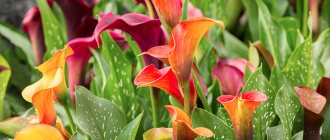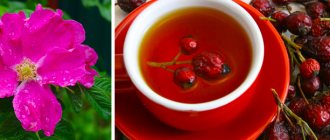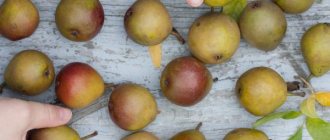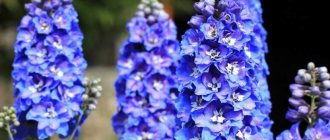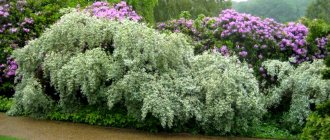Alstroemeria is a perennial flower brought from South America.
There are about 200 varieties of alstroemeria. The height of the flower reaches 2 meters in height. The diameter of an alstroemeria flower reaches 5 centimeters. The colors vary: green, white, orange, purple and red. Not all varieties of alstroemeria are grown in summer cottages. Only the most popular ones are preferred by florists and gardeners. Flowers are characterized by their individual characteristics. Each variety is beautiful in its own way. Alstroemeria is grown to decorate a personal plot or create bouquets. Recently, the flower has gained great popularity in creating summer wedding bouquets; it looks very gentle, fresh and light.
There is an opinion that alstroemeria has its similarities with orchids and lilies. Some varieties have names with the word "lily". Alstroemeria has no hybrid similarities with these flowers. One of the features of the plant is their curved shape of the petals, bends and twists at one hundred and eighty degrees.
What does alstroemeria look like: description
Alstroemeria: cultivation and care
Alstroemeria are flowers very similar to lilies. They are distinguished by spindle-shaped roots and tall stems. Small linear leaves are located throughout the stem, but they are more concentrated at the top.
A feature of this plant is considered to be resupination - the petioles of the leaves are twisted, which is why their lower part is located on top and the upper part is located below. This makes alstroemeria even more unusual.
Astralmeria flowers can be pink, scarlet, purple or even lemon in color. They can be either monochromatic or multi-colored - for example, in the middle the flower can be yellow, and at the ends of the petals - crimson. The petals also have dark longitudinal stripes. Alstroemeria has six lanceolate petals, they are arranged in threes in two circles. The stamens are arranged in the same way and have elongated anthers.
For reference! With proper care and a favorable climate, the plant blooms twice a year: in spring and summer, and sometimes in autumn, if it is warm. The alstroemeria fruit is a capsule with small seeds that are dispersed by the wind.
There are more than a hundred varieties of alstroemeria - among them, common varieties are:
- Virginia - white alstroemeria, has large flowers that bloom from June to November. The height of the stem is about 70 cm. The plant loves the sun very much.
- Harmony - distinguished by bronze flowers with pronounced dark strokes on the stems. Stems up to 160 cm, strong. Blooms in spring and autumn until frost.
- Regina is a tall variety, the stems grow up to 2 m. Pink alstroemeria blooms in spring and autumn.
- King Cardinal - the variety is distinguished by the presence of tall peduncles in its flowers. Loves plenty of light. Alstroemeria is red, blooms from April until the onset of autumn cold weather.
- Beauty - stems up to 170 cm, powerful. Alstroemeria is purple, may have a lilac tint. Sometimes you can see blue flowers. These alstroemerias bloom in spring and autumn, in September.
Alstroemeria can be of different colors: from white to purple
Description and types of plants
Before growing this flower at home, you should read the description and photo of alstroemeria and choose the appropriate variety. These are tall plants that can grow up to 80–150 cm or more. All varieties differ in the color of the petals, but have a characteristic leaf shape. Individual leaves rotate around their axis during growth and can be directed upward with the lower plate.
Among the most popular varieties of alstroemeria flowers are:
- Golden Alstroemeria is a bright yellow flower that grows naturally in Peru. This variety is considered tall and can reach 150 cm. Its main feature is that it can withstand frosts down to -13 ᴼC.
- Alstroemeria brasiliensis is a tall flower that can grow up to 2 m. The flower petals are colored bronze or red.
- Alstroemeria nano is a Peruvian variety. This is a small plant that grows up to 10 cm. Alstroemeria flowers of this species are yellow with dark spots.
- Alstroemeria bloodflower is a species that grows naturally in Chile and Peru. It is valued for the fact that up to 15 large bright flowers can appear on one plant. All of them are painted in an intense red color.
There are other varieties, many of which were artificially bred by breeders. For example, the Cosmo variety is distinguished by its snow-white petals. Virginia is another variety with white flowers, but the edges of its petals are wavy. Varieties Beauty (with lilac or purple flowers), Harmony (bronze flowers with black stripes) and Canaria (flowers with a canary shade and black splashes) can bloom twice per season.
To grow alstroemeria in the garden, you should choose only those varieties that tolerate frost.
Alstroemeria: planting and care in open ground
Alstroemeria flowers
To understand how to grow alstroemeria, you should start by purchasing plant seedlings. You can grow it from seeds, but you will have to work hard for this, and it will begin to bloom only after a few years.
Important! It is better to buy seedlings in specialized stores, and not from hand. Otherwise, there is a high chance of running into a diseased plant, which will quickly die.
It is recommended to plant the finished seedlings in open ground in May, when the warm weather becomes stable and frosts are definitely not expected. The soil should warm up to at least 20 °C. Seedlings should be planted at a distance of 40-50 cm from each other, the holes should be about 30 cm deep.
To prevent the plant from rotting from excess moisture, it is recommended to pour a little expanded clay or crushed stone into the bottom of the hole. A layer of compost is placed on top to nourish the plants. The rest of the hole is filled with soil and watered.
The area where alstroemeria is planted must be protected from the wind. She needs a lot of sun throughout the day. Light partial shade from neighboring bushes and trees is recommended so that the sun's rays do not burn the delicate leaves and petals of the plant.
Important! In the middle zone, the bush often freezes due to harsh winters if it is not protected from frost. It should be planted in open ground only in areas with a mild climate.
Alstroemeria in cut
Alstroemeria has gained particular popularity as a cut plant. This is a plant that can form the basis of a bouquet. Often used to complement the main colors in an arrangement.
The stability of cut alstroemeria is simply amazing: from 10 days to 2 or even 3 weeks!
Alstroemeria varieties 1 - Record, 2 - Jaffa
Alstroemeria propagation
You can propagate the plant yourself using seeds or by dividing the rhizome.
Propagation by seed
Flowers similar to lilies, only small
Inexperienced gardeners may find it difficult to grow alstroemeria from seeds, since for seedlings to germinate, they need to create certain conditions and prepare seed material.
Important! When propagated in this way, hybrid plants may lose their morphological characteristics. The new flower will not be exactly the same as the plant that produced the seeds. It makes sense to propagate only species-specific varieties of alstroemeria in this way.
Alstroemeria seeds
You can purchase seeds or collect them when the flower capsule has just cracked. It can be loosely wrapped in gauze to prevent the seeds from scattering on the ground.
The collected seeds need to be stratified - this way their germination rate will be higher and they will germinate faster. First, they are placed in a damp cloth or gauze, and then in the refrigerator for a month.
It is recommended to sow seeds at the end of February in small containers. You can use peat cups. You only need to place the seeds 1 cm deep into the substrate. The containers should be covered and placed in a place where the temperature is +17..+21C. Shoots will appear after a month.
Picking can be done after three leaves appear. The resulting seedlings should be planted in open ground in May, but the first buds will appear only after 1-3 years.
Propagation by dividing rhizomes
This is how it is worth propagating hybrid varieties - new plants will bloom this or next year. It is important to divide after flowering.
It is important to carefully dig up the bush. The roots need to be cleared a little from the ground and then divided into 2 or 3 parts depending on the size. The cut areas must be treated with charcoal or a special disinfection solution. Immediately after division, new flowers need to be planted.
Rhizome of the plant
Alstroemeria in history
Alstroemeria, or Peruvian lily, lily of the Incas, as Europeans initially called this amazing plant, became the most popular flower crop in the world in the second half of the 18th century. At first, Sweden was “conquered” by the beauty and grace of this flower, then the “tulip paradise” was Holland and England.
Alstroemeria varieties 1 - Gold, 2 - Whistler
Now it is grown even in such distant countries as Kenya and Japan. But most species of this plant are still common in its homeland, South America.
Alstroemeria varieties 1 - Revolution, 2 - Record
Care during flowering and dormancy
Although alstroemeria is an unpretentious flower, it needs some care for growth and flowering.
Temperature
Viola flowers
During the dormant period and preparation for flowering, alstroemeria requires a temperature of about +15 °C at night - +13 °C.
For the development of seedlings, growing the root system and flowering, a temperature within +21..+23 °C is more suitable.
It is important that when growing in a greenhouse, the temperature does not drop below +8 ° C, otherwise the plant will freeze.
Attention! If the flower is kept in open ground all year round, it must be protected from severe frosts.
Watering
There is no need to water alstroemeria often - in case of heavy rains, additional watering is not required; in their absence, watering once a week is sufficient.
The soil should be slightly moist, but the plant does not like excess water: the roots may rot. If there is not enough moisture, alstroemeria may stop blooming and die altogether.
The soil
Sandy or clay soil is more suitable for this flower than heavy soil. Soil acidity should be between 6.5 and 7 pH. If the pH is more than 7, you can reduce the acidity by adding peat or substrates that are sold in specialized stores.
The soil around the roots should be mulched so that they do not overheat - otherwise the flowering of the plant will be damaged. The ground around the flower should be covered with a 3 cm thick layer of compost, manure, leaves or grass. Thanks to it, the weeds near the alstroemeria will grow worse, the soil will be more nutritious, and the roots will be protected.
Top dressing
For abundant flowering, you need to fertilize the bushes 3-4 times a month from spring until autumn frosts. What matters is what is included in the fertilizer: it must contain both phosphorus and nitrogen. Thanks to them, the flowers and leaves will be large and bright.
Note! From time to time you can add a little wood ash under the bushes.
Alstroemeria needs to be fed several times a month.
Preparing for winter
Different varieties of alstroemeria bloom from spring until autumn frosts. When alstroemeria flowers wither, for further cultivation they need to be carefully removed, and the bushes themselves should be thinned out so that they are not too thick and do not take a lot of strength and nutrients from the plant. Thin and weakened stems must be removed, and all healthy ones must be shortened.
In order for alstroemeria to successfully survive the winter, it is covered with spruce branches, film, and then soil and humus. This way the roots will not die from frost. Annual varieties do not need to be protected from frost in any way - they will not bloom next year in any case.
If alstroemeria are grown at home, there is no need for special preparation for cold weather: it is only important to observe the temperature and light conditions. For this you can use phytolamps.
Features of growing at home
Alstroemeria is an exotic plant, so it will need to be created as comfortable as possible. It can be grown in the garden, in a greenhouse or in pots on windowsills. With proper planting and care, alstroemeria will delight you with large flowers and become a bright decoration of the garden.
Alstroemeria propagation methods
The plant can reproduce in two main ways: by seeds and by dividing the rhizome. The first method is only suitable for species varieties, since hybrids can lose the properties of the mother plants. You can collect seeds from those flowers that are already growing on the site, but you need to keep in mind that the fruits are very fragile. At the slightest touch, their peel cracks and the seeds scatter in all directions from the flower. Before collecting seeds, the plant should be covered with gauze. Next, the seeds must go through several stages:
- stratification - seeds are sent to the refrigerator for 2-3 months;
- at the end of winter and beginning of spring, seeds can be germinated;
- upon completion of stratification, they are placed in small containers in the ground to a depth of 1 cm.
Seeds germinate at a temperature of 18°C. These will produce seedlings, which can then be transplanted into open ground. When growing alstroemeria flowers from seeds, they will only be able to bloom in the third year after planting.
The second method is to propagate alstroemeria by dividing the rhizome. It is also suitable for hybrids, since the new plants retain all the properties of the mother plants. The rhizome should be divided in the fall, at the end of the flowering period. The plant is carefully dug up, trying not to damage the roots, and then divided into 2-3 parts. Each of them must have a fully formed root system. The cuts are treated with disinfectants, and the bushes are placed back in the ground.
Growing in open ground
Planting alstroemeria in open ground and caring for it require time and attention. The plant needs to create the most comfortable conditions in which it can grow and reproduce:
- watering frequency - 1 time per week, in drought conditions you can water 2 times every 7 days;
- after each watering the soil is loosened;
- fertilizers - compost during planting, then organic or mineral fertilizers three times a month;
- Before the start of the cold season, the green part of the plant is cut off, and the rhizome is covered with leaves, peat or covering material.
If further seed collection is not planned, it is recommended to cut off the buds at the end of flowering. This way, new flowers form faster in their place.
Growing in a greenhouse
It is convenient to grow alstroemeria in a greenhouse on an industrial scale. Here you can create the most comfortable climate even in the absence of suitable weather conditions. The soil should consist of sand, leaves, peat and humus. It needs to be constantly watered, but not allowed to stagnate. Fertilizers are applied twice a month using nitrogen-potassium fertilizers. In winter, alstroemeria also blooms in the greenhouse, but it will need additional lighting. The temperature is about 15 degrees during daylight hours, and 13 at night. During intensive flowering it is increased to 18-20 degrees.
Alstroemeria can also grow at home in pots. Be sure to make a hole in the center of the container to prevent moisture from stagnating. It is not necessary to feed and fertilize the plant. It is enough to water it once every 3 days, and the pot is placed in the most illuminated place.
Alstroemeria has a large number of different varieties that differ from each other in size, color and shape. This is an exotic flower, but it is possible to grow it in average climates. Most often it is planted in greenhouses, which allows you to regulate the light and temperature conditions. In open ground, large, bright flowers can be difficult to obtain due to changes in temperature and soil moisture. Alstroemeria will feel comfortable at home in a pot, but it is better to choose low varieties.
Diseases and parasites
You can fight diseases and parasites with the help of drugs
Alstroemeria is resistant to both parasites and diseases, but with proper care. If you water it too much, it may develop gray mold. Its distinctive characteristic is the appearance of a fluffy coating. Immediately after the appearance of such a problem, alstroemeria needs to be treated: the affected parts are removed, and healthy parts are sprayed with a fungicidal preparation. If the plant is too severely affected, it is better to dig it up and destroy it in order to protect the bushes growing nearby.
If the bushes are not taken care of, spider mites and caterpillars may appear and quickly destroy them. To get rid of it you will have to use acaricides and insecticides.
Important! To protect against slugs, which like to eat leaves, it is worth filling the soil around the plant with tree bark in advance.
Astramerias, or alstroemerias, attract with their beauty: they can decorate the garden all summer or be used for bouquets that can be placed in a vase. Bridal bouquets made from alstroemerias and violets also look good. They will bloom every year without requiring special care: it is enough to feed them on time, water them and monitor the condition of the soil, as well as protect them from parasites.
